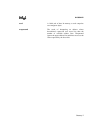
Glossary-1
GLOSSARY
This glossary defines acronyms, abbreviations, and terms that have special meaning in this man-
ual. (Chapter 1, “Guide to this Manual,” discusses notational conventions and general terminol-
ogy.)
#0data16 A 32-bit constant that is immediately addressed in an
instruction. The upper word is filled with zeros.
#1data16 A 32-bit constant that is immediately addressed in an
instruction. The upper word is filled with ones.
#data An 8-bit constant that is immediately addressed in an
instruction.
#data16 A 16-bit constant that is immediately addressed in an
instruction.
#short A constant, equal to 1, 2, or 4, that is immediately
addressed in an instruction.
accumulator A register or storage location that forms the result of
an arithmetic or logical operation.
addr11 An 11-bit destination address. The destination can be
anywhere in the same 2-Kbyte block of memory as
the first byte of the next instruction.
addr16 A 16-bit destination address. The destination can be
anywhere within the same 64-Kbyte region as the first
byte of the next instruction.
addr24 A 24-bit destination address. The destination can be
anywhere within the 16-Mbyte address space.
ALU Arithmetic-logic unit. The part of the CPU that
processes arithmetic and logical operations.
assert The term assert refers to the act of making a signal
active (enabled). The polarity (high/low) is defined by
the signal name. Active-low signals are designated by
a pound symbol (#) suffix; active-high signals have no
suffix. To assert RD# is to drive it low; to assert ALE
is to drive it high.


















